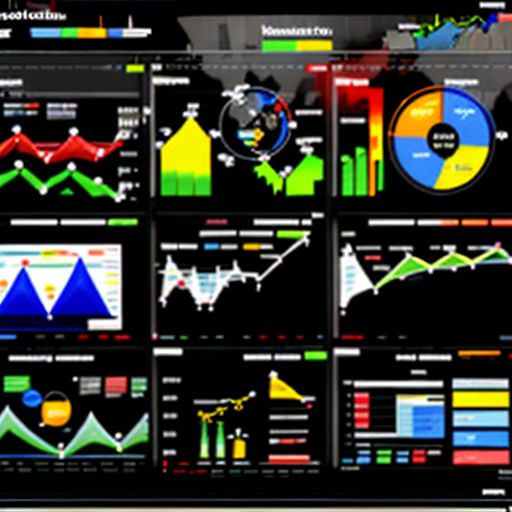Navigating Uncertainty: A Deep Dive into Financial Risk Management Software
In today’s volatile financial landscape, businesses face a myriad of risks that can impact their bottom line. From market fluctuations and credit defaults to operational failures and regulatory changes, the challenges are numerous. To navigate these uncertainties and ensure financial stability, organizations are increasingly turning to sophisticated tools: Financial Risk Management Software. This article delves into the world of financial risk management software, exploring its importance, benefits, and key features.
Understanding the Essence of Financial Risk Management Software
What is Financial Risk Management Software?
Financial risk management software is a specialized tool designed to help businesses identify, analyze, assess, and manage various financial risks. It provides a centralized platform to collect data, model scenarios, and generate reports, empowering organizations to make informed decisions and mitigate potential losses.
Why is Financial Risk Management Software Crucial?
The importance of financial risk management software cannot be overstated. Here’s why:
- Proactive Risk Identification: The software helps identify potential risks early on, allowing businesses to take timely action before they escalate.
- Informed Decision-Making: By providing data-driven insights and risk assessments, the software empowers businesses to make informed decisions that minimize potential losses.
- Improved Compliance: Many solutions offer features that streamline compliance with industry regulations and reporting requirements.
- Enhanced Operational Efficiency: Automating risk management tasks frees up valuable time and resources, allowing teams to focus on strategic initiatives.
- Competitive Advantage: Effective risk management can enhance a company’s reputation and attract investors, providing a competitive edge.
finance.taigamemienphi.me/wp-content/uploads/2024/07/financial-risk-management-dashboard-669bf3.jpg" alt="Financial Risk Management Dashboard" width="512" height="512">Financial Risk Management Dashboard
Exploring Key Features and Benefits
Core Functionalities of Financial Risk Management Software:
- Risk Identification and Assessment: Identifying potential risks across various categories, such as credit risk, market risk, and operational risk, and assessing their potential impact.
- Quantitative Analysis: Utilizing advanced modeling techniques and historical data to quantify the likelihood and impact of different risk scenarios.
- Risk Mitigation and Control: Developing and implementing strategies to mitigate identified risks, including setting up control mechanisms and action plans.
- Reporting and Monitoring: Generating comprehensive reports and dashboards to monitor risk exposures, track mitigation efforts, and ensure compliance.
Benefits of Implementing Financial Risk Management Software:
- Enhanced Risk Visibility: Providing a holistic view of all potential risks, enabling organizations to proactively address vulnerabilities.
- Improved Decision-Making: Facilitating data-driven decision-making by providing real-time insights and risk assessments.
- Increased Operational Efficiency: Automating tedious risk management tasks, freeing up staff to focus on strategic initiatives.
- Strengthened Compliance: Simplifying compliance with regulatory requirements through automated reporting and audit trails.
- Enhanced Stakeholder Confidence: Demonstrating a commitment to risk management, which can boost investor confidence and improve brand reputation.
Addressing Frequently Asked Questions
What are the different types of Financial Risk Management Software?
Financial risk management software solutions cater to various needs. Some common types include:
- Enterprise Risk Management (ERM) Software: Provides a comprehensive platform for managing risks across all areas of an organization.
- Credit Risk Management Software: Focuses specifically on assessing and managing credit risk associated with lending and borrowing activities.
- Market Risk Management Software: Helps organizations analyze and manage risks related to market fluctuations, interest rates, and commodity prices.
- Investment Risk Management Software: Designed for investment firms and portfolio managers to assess and manage risks associated with investment portfolios.
How do I choose the right Financial Risk Management Software for my business?
Selecting the right software requires careful consideration of factors such as:
- Business Size and Complexity: Smaller businesses may benefit from simpler solutions, while larger enterprises might require more robust platforms.
- Industry-Specific Requirements: Different industries have unique risk management needs, so it’s crucial to choose software tailored to those requirements.
- Budget and Implementation Costs: Consider both the upfront cost of the software and the ongoing expenses associated with implementation, training, and maintenance.
- Integration Capabilities: Ensure the software integrates seamlessly with existing systems, such as accounting software and CRM platforms.
Conclusion: Embracing Proactive Risk Management
In today’s dynamic business environment, financial risk management is not just an option, but a necessity. Financial risk management software empowers organizations to proactively identify, assess, and mitigate potential risks, ensuring financial stability and sustainable growth. By embracing these tools and adopting a proactive risk management approach, businesses can navigate uncertainties with confidence and achieve long-term success.
We encourage you to share your thoughts and experiences with financial risk management software in the comments section below. Have you implemented a solution? What challenges have you faced? Let’s start a conversation and learn from each other.






